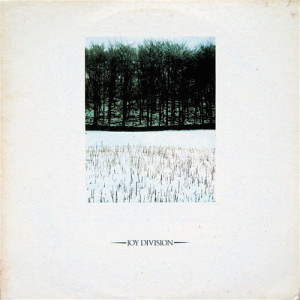Antidote to Isolation (Part 1)
By Asher Crispe: May 21, 2015: Category Inspirations, Quilt of Translations
Walk in silence,
Don’t walk away, in silence.
See the danger,
Always danger,
Endless talking,
Life rebuilding,
Don’t walk away.
Walk in silence,
Don’t turn away, in silence.
Your confusion,
My illusion,
Worn like a mask of self-hate,
Confronts and then dies.
Don’t walk away.
People like you find it easy,
Naked to see,
Walking on air.
Hunting by the rivers,
Through the streets,
Every corner abandoned too soon,
Set down with due care.
Don’t walk away, in silence,
Don’t walk away.
Atmosphere by Joy Division
 How many times have we given and received the silent treatment? Hurtful words decompose slowly–they might even remain radioactive for decades, unapproachable, contaminating landfills. When nothing is left to be said, or nothing was worth saying in the first place, or–to turn the blame game away from the people involved and towards something that we can’t possible be held responsible for, something which we didn’t create but merely use, something that often has poor aim and accuracy, something that is unavoidable–namely, that cunning vehicle known as language, we re/sign ourselves to silence.
How many times have we given and received the silent treatment? Hurtful words decompose slowly–they might even remain radioactive for decades, unapproachable, contaminating landfills. When nothing is left to be said, or nothing was worth saying in the first place, or–to turn the blame game away from the people involved and towards something that we can’t possible be held responsible for, something which we didn’t create but merely use, something that often has poor aim and accuracy, something that is unavoidable–namely, that cunning vehicle known as language, we re/sign ourselves to silence.
In the dark cloud of our most skeptical moments we may wonder if we are not duped again and again by words. Did they break prematurely (meaning is unsustainable) or else come defective from the manufacturer (unstable foundations of meaning) with only crude instructions (ambiguous rules for language) and no warranty (assurance is left to the upholding of promises and goodwill of the practitioners)? Did someone fail to mention that batteries also are not included (we must supply our own energy to jolt inert words to life)? Or maybe the issue is that they habitually get damaged in transit (made sense to my mind’s ear but it clearly didn’t resonate to yours)?
How frustrating for our inner experience that hankers to hitch a ride on words in order to port over to the world, to things, to other people. When words do succeed we are almost taken by surprise. Why? How? What a jump! Leaping out of our subjective solitude we participate in a creative commons. We somehow steal over the border of self to the other. If we imagine our embodied self as framed by the outer layers of its materiality, then our skin would serve as this border-space. As the final barrier that must be broken, it not only sets apart our inside from our outside, it also establishes the dichotomy of private sphere verses public appearance. Our words, once hewn from within the concealed caverns of our inner world, have to be bussed into the public domain. Realizing this, we sense that our outermost dermal layer consequently forms a display. It advertises without ever needing to paint and hang a sandwich board over the body. But all this only comes on a bad day! Words can certainly be delightful and mysterious, uplifting and inspiring, especially when they exceed our expectations. However, the positive account of language will have to wait, as for now we are only concerning ourselves with speech pathologies.
Making an outer show of my inner thoughts and feelings, opening them to the world and to others, necessitates bringing them to the surface and allowing them to be displayed on the screen of my most external layer of self. This is what is meant by our metaphoric skin–the space that signals that something is leaving ‘me’ and (potentially) coming in contact with ‘you,’ the other. Skin presents a kind of givenness, a laying bare, a simple disclosure. Unless, of course, I choose to hide behind it. If the pores clamp down and nothing enters or exits, if it forms a sealed barrier, then ‘I’ attempt to be protected and preserved inside, to withdraw in silence.
The bond we share with others through communication is literally and figuratively mediated through the skin. In the Torah (Vayikra/Leviticus Chapters 13 and 14 in particular), the break down of social relations that results from a misuse of speech afflicts the offending party with a skin disease known a tzara’at. Often confused with leprosy, there is nothing natural about this disease (which, while it no longer has the same kind of physical manifestation, nonetheless remains as relevant as ever on the psychological plane.) More significantly, it may be considered the root of all disease (something which is gleaned from it being the only disease detailed in the Torah along with its proper diagnoses and treatment) and given its archetypal status, there is reason to assert that the knowledge of how to heal it could afford us the ability to heal all disease. In short, all disease distills down to bioinformatic issues–to miscommunication in the body or between the body and one’s environment.
Linking back to our thinking about skin, we see that the Talmud alerts us to the idea that tzara’at is a result of “[a person] that emits evil” or “slanders” [motzi ra] (Arachin 15b). Speech is about circulating and exchanging ‘representations’ and negative speech of the sort indicated here, only serves to misrepresent or distort our view of a person or situation. Automatically then, the one of who engages in such activities wears it on their own external appearance or skin which then becomes irritated and afflicted. Digging into the Talmud’s statement a bit more, we discover the the Hebrew phrase that is employed–motzi ra–is itself a poetic contraction or short-hand notation for a metzora (the one who is afflicted with tzara’at) with one important addition. Between motzi (brings forth or emits) and ra (evil) we have the imposition of the word shem which means a ‘name.’ Thus, the full phrase becomes motzi shem ra or ‘[a person] that emits a bad name.’ A shem (name) also relates to the idea of placement in Hebrew (as in the verb form la’sim “to place”). Names designate. They identify. They place and situate.
Consequently, giving something or someone a ‘bad name’ would constitute a primal kind of identity theft, a fundamental misplacement or displacement of the subject at question. With so much emphasis in the age of information technologies on insuring the proper routing of a message so that it reach its intended destination or designation, the good name would be an ID that remains faithful to the positive flow in the system. Having the wrong ID would cause a blockage or loss of circulation. It would constitute an example of information entropy. Like a virus that keeps trying to replicate, the wrong information must be blocked from circulation or if it has already been released, we must stop its continued dissemination and then try to quarantine the problem.
From this we may put forth that all of the Torah’s directives regarding negative speech can easily be translated into the larger sphere of information systems. Words that damage the self-other relationship (the calculus of finite and perhaps even infinite differences) by substituting the other with all of his or her diverse possibilities for a negative image, an idol-idealized depiction or finite representation, or simply a gross generalization, harm our own self-constitution. This manner of painting the other rapidly mutates into an irritation that discolors and disfigures the self. Extending from the self to a mismarked other fails to establish and maintain a relationship but rather pushes us back upon ourselves. Instead of relating to the other, we somehow end up chasing after an apparition of the mind, a figment of the imagination.
Although some might consider the sound of their audible voice a successful act of communication, the signal only feedbacks into the consciousness from which it arouse. So too, we encounter many types of feigned openness. Casting editorial oversight to the wind, these instances, when a person’s unreformed habits of allowing everything to spill out, of running at the mouth, of full disclosure, end up saying little or nothing even as they say too much. The dam gives way as we rationalize to ourselves that I want to be open, totally open, to not mince words for there is no time to beat around the bush. Without considering the ramifications, we might feel justified in letting the recipient of our words ‘have it with both barrels.’ We are merely ‘letting loose’ and ‘saying what we think.’ Hence, a misguided openness might really point to a severe type of closedness.
This closedness is trigged by implication from the participation in negative speech or information entropy as suggested by the Targum Onkelos (the canonical Aramaic translation of the Torah) whereby tazar’at is rendered sigiru meaning “closed.” What we have drawn here is a dialectic between the open and the closed. Sometimes being too open, too forthright with our speech (as texting teens love to exclaim TMI or ‘Too Much Information!’) we end up producing the exact opposite of our intended effect. Just as too much exposure to the sun produces skin maladies, over exposure of our self to the other may have harmful consequences. When we veer off from our target or select the wrong target to begin with, we suddenly realize that we are lost. Closed. Sealed in. Alone.
 In classic homeopathic style (where healing occurs using the law of similars), the cure for feeling cut off and isolated from the other is to remove ourselves from the other even more. The treatment for the metzora, once examined and declared as such by the Kohen (priest), was to be further separated from the camp. Social isolation and solitary confinement purifies the state of alienation and estrangement that occurred from mis-identification and mis-representation. The one who only relates to maligned appearances suffers his or her own appearance (skin) to be maligned.
In classic homeopathic style (where healing occurs using the law of similars), the cure for feeling cut off and isolated from the other is to remove ourselves from the other even more. The treatment for the metzora, once examined and declared as such by the Kohen (priest), was to be further separated from the camp. Social isolation and solitary confinement purifies the state of alienation and estrangement that occurred from mis-identification and mis-representation. The one who only relates to maligned appearances suffers his or her own appearance (skin) to be maligned.
An alternative take on this entire disease should also sound off: while we just said that the overly open disposition led to a closedness and that this closedness itself must be closed off in order to heal and obtain closure, it is also possible to say that we may lack of true openness from the outset. At the onset of speech lies our fundamental closedness. Instead of being too open, according to this view, we were never really willing to be truly open to begin with. This original closedness in turn results in a further adverse closedness.
Accordingly, a summary formulation of these perspectives might read: 1) excessive openness begets unintentional closedness which requires an amplified or exaggerated closedness to cleanse and ready a person for true openness or 2) an unconscious closedness eschewed openness from the start and this precipitated the need for an intensification of this closedness in order to draw it into consciousness, grabble with it, and then proceed with real openness.
Our slicing and dicing of the social work of treating speech pathologies will continue in Part Two.
Antidote to Isolation (Part 1),













;)
;)
;)
;)
;)
;)
;)
;)
;)
;)
